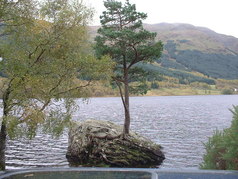|
So in my last few posts I have been covering various topics in soils. From the basic structure of soils to soil pH there is much you need to know about soils in order to successfully manage them in a sustainable fashion. Without soil humans could not exist on this planet at all, it forms the base on which we grow our food, build our homes, and live out our lives. But soil is not something that forms overnight. It takes anywhere from thousands to millions of years to build even one inch of soil so it is not a resource that should be wasted or mismanaged. There are 5 factors that contribute soil formation that take place in the natural world,
 Parent Material The parent material of a soil is the native rock of any location. The soil will take on the characteristics of the parent material it was formed from. So if you live in a area that has a limestone bedrock the soil that formed on it will be alkaline and may inhibit the growth of certain plants. Knowing what the parent material is beneath your feet can save you a lot of time and effort when it comes to starting a garden. Climate The climate and the weather patterns of the location in which a soil forms greatly impact the rate at which soil can form. Through weathering from wind, rain and sun the parent material of a soil will slowly break into smaller and smaller particles until it becomes the sands, silts and clay's that form building blocks of soil. Areas that have lots of rain, softer parent materials and other erosive forces will generate a thick layer of soil much quicker than a areas like the deserts, mountians or the poles. Landscape Landscape affects how soils form on a smaller scale. Even with all other factors being the same the soil that is at the bottom of the hill will be different that the soil at the top of the hill. There will be variability in thickness, chemical composition, pH, soil texture, etc. Living Organisms Once there is a little soil in place organisms like mosses and lichens can begin to take root. Once they do the roots of the plants speed the process up by cracking and breaking the parent material up further. The cracks allow more water to penetrate into the parent material which allows it erode faster. As more soil forms you get larger and larger plants growing in the soil that forms which accelerates the process yet again. Time Time is by far the most important factor in soil formation. When it can take 1000 years under the most favorable conditions to form a inch of soil you need a lot of time to get something useful. If you look at Mollisols or prairie soils they can be 2 ft or more in thickness depending on your location. Even under good conditions that could be 20,000 years to form the soil which is considered the breadbasket of the world. You will also have forces overtime that can actually reset soil formation like floods or glaciers which can scour away all the soil that formed forcing the process to start again. Sustainable Living By knowing how soil is formed and perhaps more importantly how long it takes to form it should give you a appreciation for soil and what it is worth. To manage the soil in a sustainable way should be the number one goal of anyone seeking to live a self sufficient lifestyle. Soil is lost at a rate of 10 times the rate of replenishment here in the US. If one of the most advanced and educated countries in the world can't manage our soil correctly then the rest of the world doesn't have much hope. But through good practices and sustainable use we can stop and even reverse soil erosion if we wanted too. But the challenges to do that are great and soil erosion will never stop completely.
0 Comments
Leave a Reply. |
AuthorHello my name is Josh Larson and I am the creator of the Green Living Library. Here on the blog you will find updates to content found in the Green Living Library as well as stories from those living the sustainable life already. Archives
December 2021
Categories
All
|